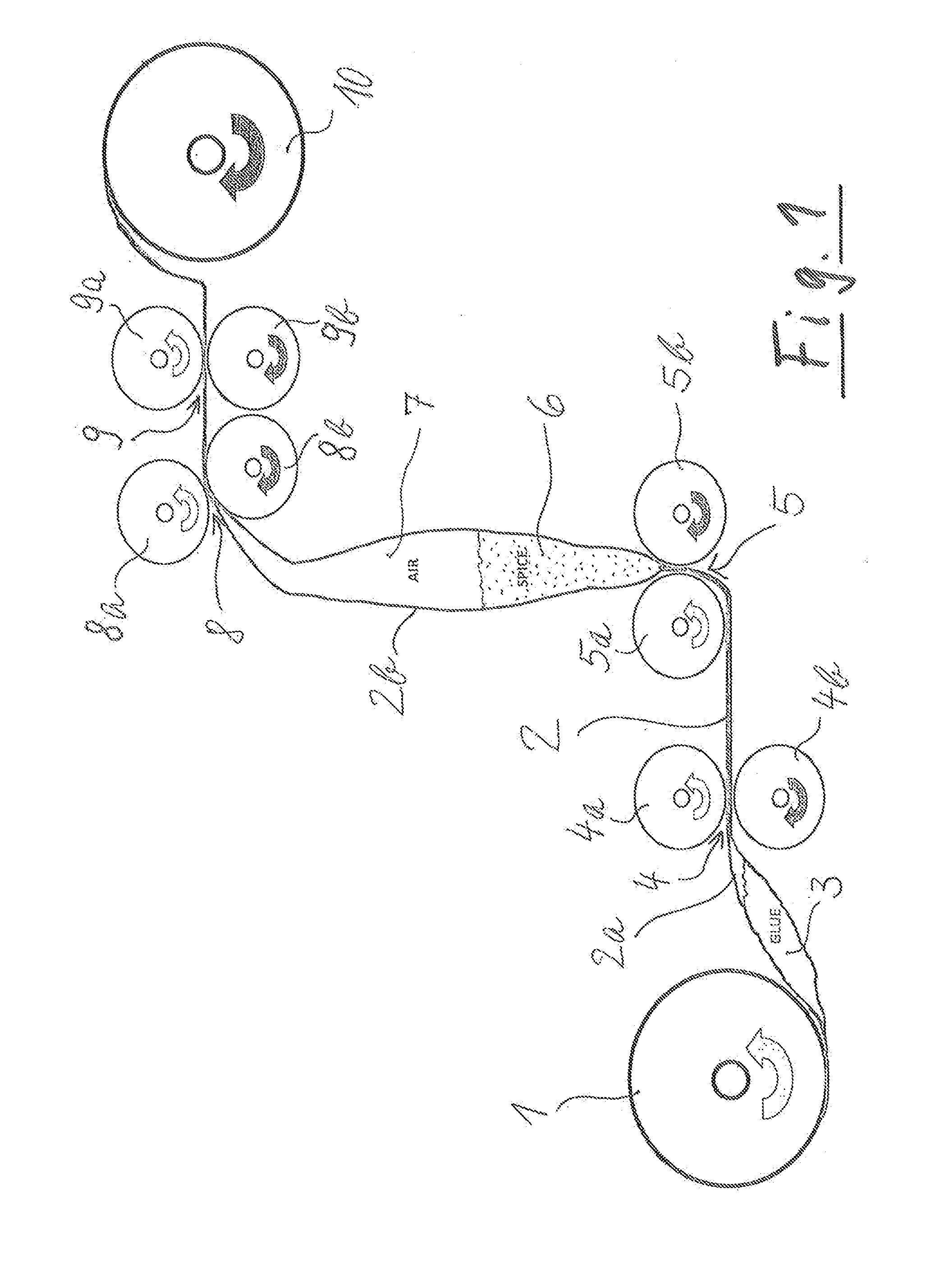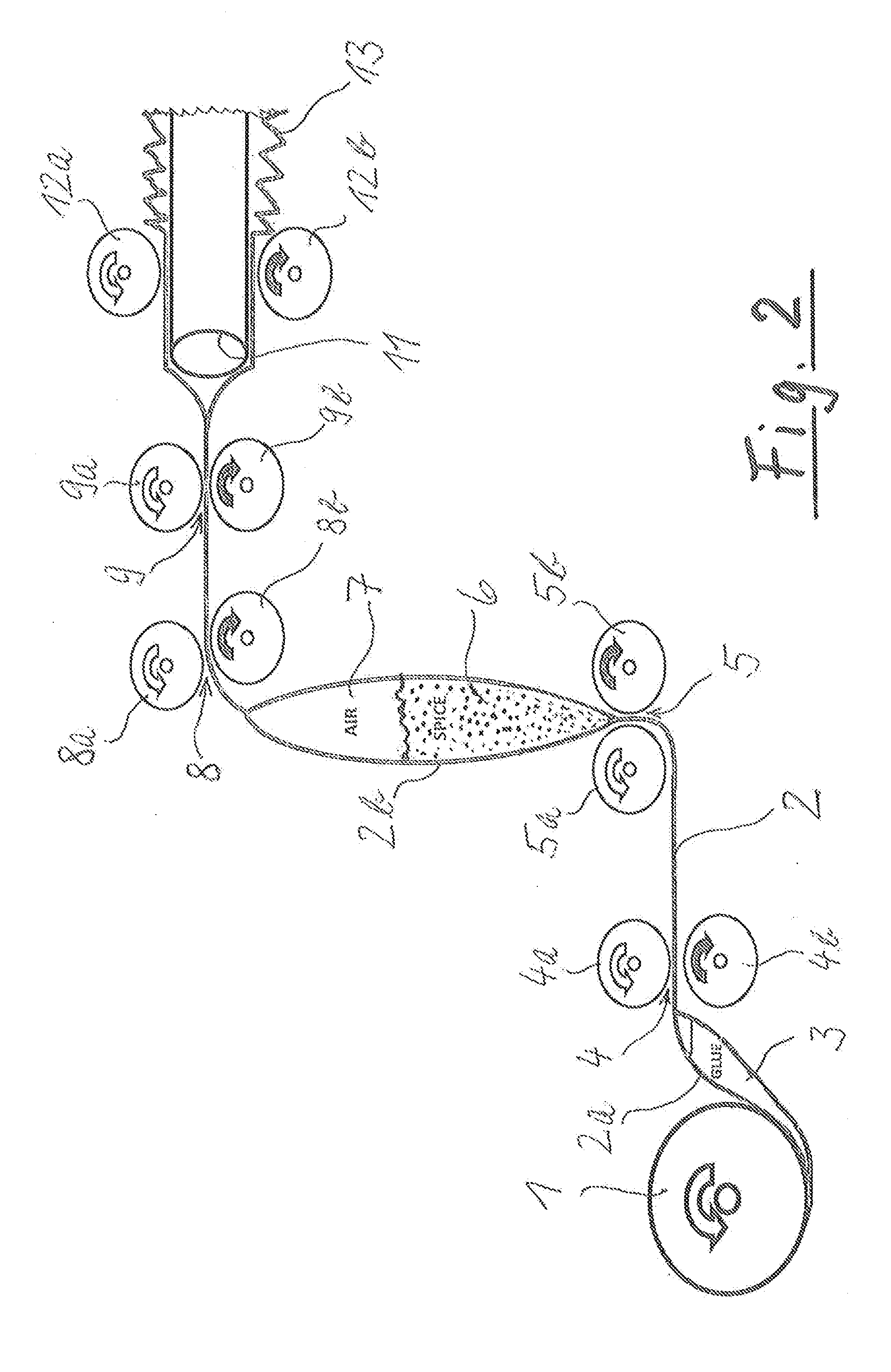Casing for Foodstuff
a food casing and tubular technology, applied in the direction of flexible covers, sausage casings with flavour impregnation, baking, etc., can solve the problems of insufficient inability to achieve uniform and thick coating, and high cost of time and energy. , to achieve the effect of convenient storage, transportation and particularly further processing
- Summary
- Abstract
- Description
- Claims
- Application Information
AI Technical Summary
Benefits of technology
Problems solved by technology
Method used
Image
Examples
Embodiment Construction
[0038]The process starts from a supply roll 1, on which the tubular casing 2 is wound up in a flat form. The supply roll 1 can accept, for example, a casing which is 40 m to 500 m long.
[0039]Sleeves made from most different materials may be considered as the casing. For example, it may involve fibrous skins reinforced with viscose, or collagen skins or dried natural skins, as well as coated textile skins, synthetic skins coated with collagen, carrageenan, or acrylate, or other mono- or multi-layered sleeves, which do not have excessive air permeability.
[0040]At the start the casing 2, which presents itself as an open tube end, is filled with a liquid adhesive 3, which is approved for use with food and known per se, and perhaps also support air, so that the casing assumes the shape of a sack 2a, which is partially or entirely filled with the adhesive 3. The amount of adhesive is measured such that the entire casing wound up on the supply roll 1 can be coated with the adhesive. The ca...
PUM
 Login to View More
Login to View More Abstract
Description
Claims
Application Information
 Login to View More
Login to View More - R&D
- Intellectual Property
- Life Sciences
- Materials
- Tech Scout
- Unparalleled Data Quality
- Higher Quality Content
- 60% Fewer Hallucinations
Browse by: Latest US Patents, China's latest patents, Technical Efficacy Thesaurus, Application Domain, Technology Topic, Popular Technical Reports.
© 2025 PatSnap. All rights reserved.Legal|Privacy policy|Modern Slavery Act Transparency Statement|Sitemap|About US| Contact US: help@patsnap.com



